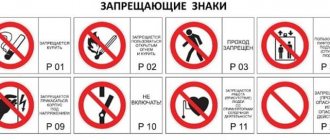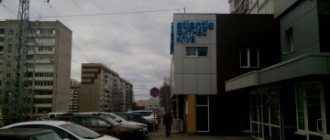Very often situations arise when it is necessary to carry out redevelopment in non-residential premises. In such cases, it is very important for the owner not to engage in amateur activities and to collect all the necessary documents that will be needed to obtain permission to carry out redevelopment work. Doing them without permission is illegal and such actions can lead to very disastrous consequences. Let's take a closer look at what non-residential premises are.
Non-residential premises - this term refers to any premises that are not intended for permanent residence, such as offices, shops, etc. They can be separately located or located in multi-apartment residential buildings. The list of permitted redevelopment works greatly depends on this.
What work does not require a permit?
There are many renovations that do not require a permit. When performing them, the integrity of the building should not be violated and the design plan should not be changed, that is, all walls and partitions must remain in place and in complete integrity. Let's look at the list of repair work that can be done without permission:
- wallpapering or painting walls;
- plastering or leveling walls with putty;
- replacing or painting the flooring;
- any type of cosmetic work that is carried out on the external walls of the building;
- replacement of windows or doors, etc.
These repairs are aimed at maintaining the building in good appearance, which is not prohibited by law and does not apply to redevelopment.
What types of work are considered redevelopment in non-residential premises?
It is very difficult to list all types of work that are considered redevelopment in non-residential premises, let’s consider the most common:
- displacement of any partition;
- violation of the integrity of the wall;
- extension of any building;
- project change;
- increasing the internal space by removing the wall;
- dividing the room by erecting a partition;
- adding a separate entrance/exit by destroying a wall, etc.
All of the above types of repair work relate to redevelopment, and their implementation requires mandatory permission from special authorities. The location of non-residential premises is also of great importance. If it is detached, obtaining permission for redevelopment is much easier than if it is located in residential buildings.
Redevelopment in separately located non-residential premises
For owners of non-residential premises that are located as a separate building, obtaining permission for redevelopment is much easier. Let's look at all the steps step by step:
- first, the owner needs to develop a redevelopment plan, which is carried out by a highly qualified specialist;
- a specialist assesses the condition of the building itself, its walls and the possibility of carrying out the desired redevelopment;
- then the specialist draws up a drawing with the redevelopment, as well as a description of the materials that will be used to implement it;
- after completion of the design work, the owner receives a ready-made plan;
- the owner submits a redevelopment plan to the MFC or to the public services portal, along with an application and documents establishing ownership;
- is waiting for a response from the government agency about the possibility or prohibition of carrying out work on redevelopment of non-residential premises.
How to legalize unauthorized redevelopment?
To obtain approval for the redevelopment of non-residential premises that have been changed illegally, you must:
- Involve a special commission that will verify that the illegal redevelopment did not violate the overall structure of the building or cause harm to communications or people (if the non-residential premises are located in a multi-story building).
- Obtain permission to approve the redevelopment from the architectural department of the city government.
- Contact the BTI to call an employee who will take the necessary measurements and indicate the changes that have been made.
- Obtain an opinion from a specialist on the work carried out and on the compliance of building structures with norms and regulations.
- Contact the cadastral service with a conclusion. Get a new technical passport.
- With all documents, contact the local administration and obtain approval for the decision to approve changes already made in non-residential premises.
- Submit documents to Rosreestr to amend the state certificate of ownership of the property.
Redevelopment of non-residential premises in a residential building
Owners of non-residential premises located in a residential building receive permission for redevelopment much less often than in the first case, because when one wall is displaced, the load on the entire building changes and this can lead to bad consequences. In this case, it is very important to find a highly qualified specialist to develop a redevelopment plan, because the decision of the government agency largely depends on this. The specialist carries out a number of works in order to create the correct redevelopment plan, for example:
- assesses the condition of the building walls;
- directly at the location of the building and all the necessary documentation, assesses the possibility of moving a wall or expanding the room;
- creates a sketch of the proposed redevelopment and agrees with the owner.
After all work has been carried out at the site, the specialist creates a detailed plan for the redevelopment of non-residential premises and transfers it to the owner.
Further, all actions are performed by the owner himself. He collects all the necessary documentation and, together with the redevelopment plan, submits an application to the MFC during a personal visit or electronically through the public services portal, attaching photocopies of the entire package of documents. Upon completion of the review of the application, a positive or negative response will be issued.
Procedure for permitting redevelopment in non-residential premises
After a special state body has issued a permit to carry out redevelopment in a non-residential premises, the owner must begin to implement it as quickly as possible, because the permit is valid for 12 months, and after this time it is canceled and it will be impossible to carry out work. Let's look at the owner's action plan step by step after receiving permission to carry out redevelopment:
- first of all, it is necessary to find a highly professional team of workers who will carry out the redevelopment work;
- it is very important to carry out everything in accordance with the project plan according to which the redevelopment was approved; even a slight deviation from it may lead to unexpected expenses, because the commission that will accept everything will not approve the work performed;
- upon completion of construction work, the owner is provided with a work completion certificate, which indicates all the actions performed and materials used in the redevelopment;
- with the received act, the owner applies to the BTI with an application to make changes, after which a commission is appointed;
- the commission checks whether the redevelopment was carried out in accordance with the approved plan, takes measurements and compares everything, after which they give their conclusion;
- if everything was done in accordance with the design plan and no mistakes were made, the owner after a certain time receives from the BTI an approved new design plan for the non-residential premises;
- after this, the owner applies to the MFC with an application to obtain a new cadastral passport for non-residential premises with the redevelopment carried out.
What is illegal redevelopment
Important! Making significant changes to the design of a building without permission is grounds for charging a fine, and its size varies significantly for individuals or enterprises, and if the law is violated again, the sanctions increase significantly.
Redevelopment work should begin only if there is an appropriate plan and agreement with the Housing Inspectorate, BTI and the regional administration. If there is no permission, then the work is illegal.
What happens if you carry out unauthorized redevelopment? Watch in this video:
A permit must be issued when performing work:
- the formation of openings in walls or partitions that are load-bearing;
- installation of stairs;
- changing the location of various plumbing fixtures;
- removal of a loggia, vestibule or any extensions to the house;
- combining several rooms.
Important! There are certain works for which you do not need to obtain a permit, but they are quite simple, for example, glazing a loggia or carrying out cosmetic repairs, creating a door opening in a non-load-bearing wall or building a non-load-bearing partition.
What to do if you receive a refusal to redevelop a non-residential premises
If the owner has created a project plan in accordance with all laws that allow the redevelopment of non-residential premises, and has also collected all the necessary documents, but the government body made a negative decision and prohibited this procedure, he can go to court and thus obtain permission.
What is necessary to obtain permission to reconstruct non-residential premises in court:
- a project plan for redevelopment, which was created by an experienced specialist, because a lot depends on it;
- all documentation confirming the applicant’s ownership of non-residential premises;
- if a non-residential premises has several owners, then written consent for redevelopment is required from each;
- written refusal to carry out redevelopment from a government agency;
- statement from the owner.
After submitting the entire package of documents to the court, a hearing takes place and a decision is made. If the decision is positive, the owner receives a document that obliges the state body to issue permission to redevelop the non-residential premises. After which, the owner can begin to implement it.
Is there a difference in the legalization procedure in an apartment building or another building?
When carrying out redevelopment, it is worth taking into account the fact in which building the property is located; the legalization procedure depends on this.
If the premises are located in a non-residential building, then to obtain permission it is necessary to collect the main package of documents and prove that the new layout will not entail violations of sanitary standards, will not create a risk of fire in the building, and the reconstruction will not create risks for people who visit this premises. Only experts can give conclusions, so third-party involvement of specialists on these issues is required.
It is more difficult to obtain permission if the organization is located in a residential building . If redevelopment is carried out in an apartment building, then first of all it is necessary to coordinate all changes with the residents and obtain their written consent, with which they should subsequently contact the authorities to approve the project.
Before starting the reconstruction, you should find out whether the house is a non-residential property and whether it is possible to make changes that will not entail consequences. To do this, specialists are invited to analyze the condition of the electrical wiring, the location of load-bearing walls and the water supply system. In cases where the property is of an old type, redevelopment will most likely be denied.
You can learn about the redevelopment of non-residential premises in apartment buildings in the following articles:
- competent design of reconstruction;
- approval of the entrance group to the premises;
- subtleties of changes.
What to do if the redevelopment of non-residential premises was done without permission
There are quite a few cases when owners began redevelopment without obtaining permission to do so. This is illegal and can lead to a lot of trouble. For example, the owner will not be able to sell or issue a deed of gift for non-residential premises in which illegal redevelopment was carried out. In this case, it must be legalized. What is needed for that:
- it is necessary to create a design plan for the finished redevelopment;
- obtain a written expert opinion on the safety of the redevelopment;
- collect all documents confirming the applicant’s ownership of non-residential premises;
- collect all documents for non-residential premises, such as a cadastral passport, a project plan before redevelopment, etc.;
- a statement from the owner, if he is not the only owner of the non-residential premises, then written consent for the redevelopment will be required from everyone.
After the owner has collected the entire package of documents, he submits them to the MFC with a statement indicating a request to recognize the redevelopment of the non-residential premises as legal. The application is submitted in person to the MFC or in electronic format through the government services portal, in this case it is necessary to attach copies of all documents.
Very often, almost always, the owner’s application receives a negative decision; in this case, it is necessary to go to court with all the documents and a written refusal.
If the court makes a negative decision and recognizes the redevelopment of non-residential premises as impossible, the owner is obliged to return it to its original appearance as soon as possible.
In addition, the owner is fined for carrying out illegal redevelopment. But this is not the most severe punishment, there are worse ones. For example, if, after the reconstruction of a non-residential premises located in an apartment building, partial or complete destruction occurred, and even worse, with human casualties, the owner, in addition to a fine, will also receive criminal punishment, depending on the degree of damage received. Therefore, there is no need to rush and it is better to spend a little time, but do everything in accordance with the law.
Legislation regarding illegal redevelopment
The procedure for redevelopment of residential premises is considered in the Housing Code (Article 25 of the Housing Code of the Russian Federation). As for the redevelopment of non-residential real estate, it is carried out according to the same rules.
Responsibility for illegal redevelopment is prescribed in Art. 7.21 Code of Administrative Offenses of the Russian Federation.
Fines for redevelopment of non-residential premises
Any redevelopment carried out without permission from the relevant authorities is subject to a fine:
- for individuals – 2000–2500 rubles (for the capital);
- for legal entities – 300–350 thousand rubles (for Moscow).
Other consequences of illegal redevelopment
Unauthorized redevelopment of non-residential premises can result in the owner of such real estate not only being issued a fine, but also such unpleasant moments as:
- Returning the premises to its original appearance. If the inspector discovers violations of legal or sanitary standards during the redevelopment of the premises, then he will issue an order to the owner of the property, obliging him to return the property to its previous condition. As a result, you will have to make expensive repairs. If this order is ignored, then you should wait for a subpoena.
- It will be very difficult to sell non-residential premises with illegal redevelopment . First, you need to find a buyer who is ready to purchase a property with illegal redevelopment, who is ready to take responsibility for illegal changes to internal or external work. Secondly, such a buyer must have direct money, since it will not be possible to take out a mortgage on such premises (banks do not approve premises that are not properly registered).
- Criminal liability . For gross violations of safety requirements during the redevelopment of non-residential premises, which resulted in harm to a person/people, the owner of such a property may even face criminal liability.








